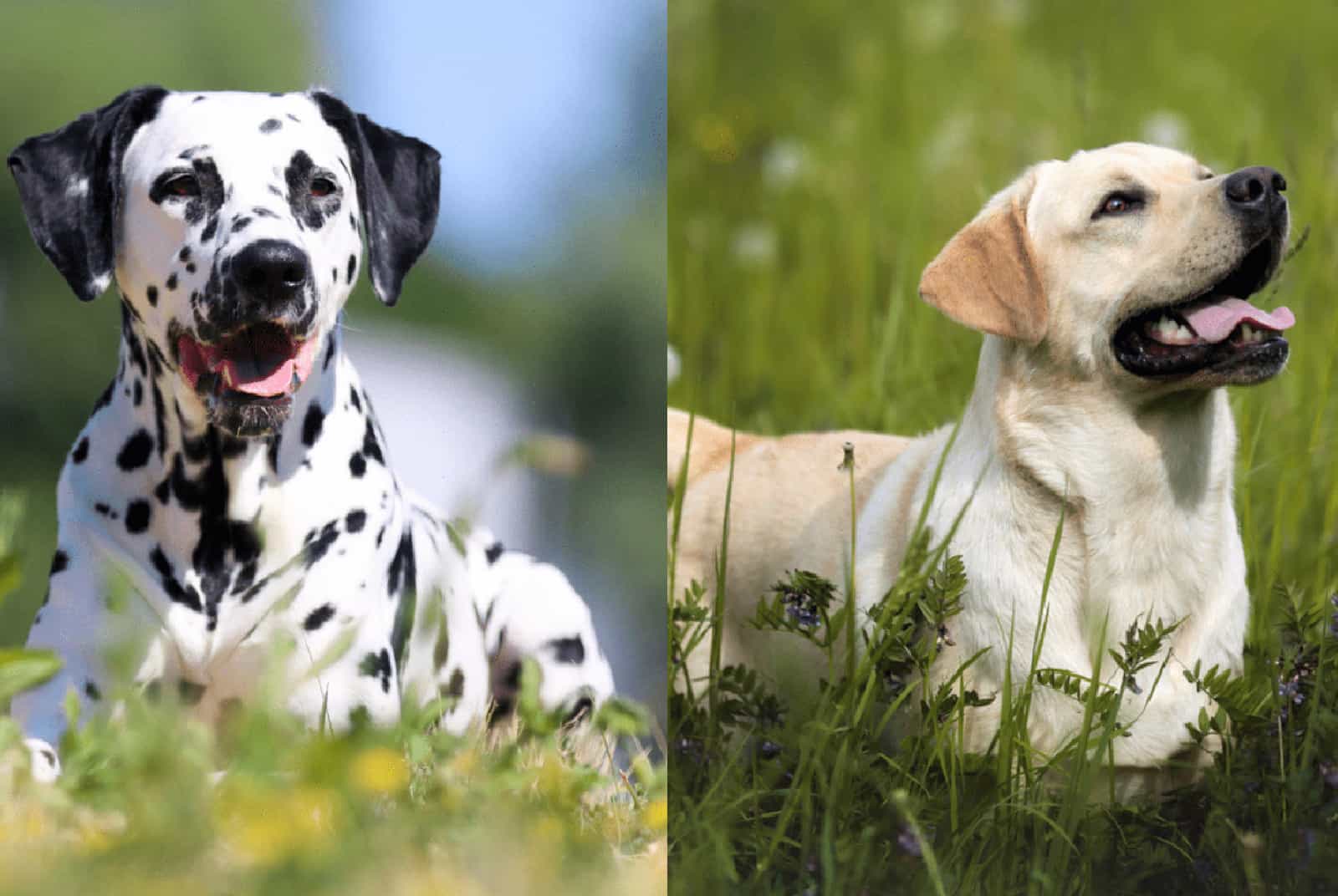A great designer dog to consider would be the Dalmatian Lab Mix. This kind of dog combines numerous admirable qualities, including intelligence, bravery, tolerance, playfulness, and lovability. What more can you ask for?
The Dalmatian Lab hybrid is a wonderful dog that practically anybody can acquire, as well as dog owners who have limited or no prior expertise with dogs.
For most of her or his life, the Dalmatian Lab mix would therefore require a lot of teaching, socializing, and activity.
Finding a puppy of the Dalmatian Lab mix might be challenging because of their relative rarity. We advise contacting specialized breeders who could be planning future litters.
Regardless of where you obtain your puppy, we strongly advise enquiring about the parents’ health and any potential health issues. That is why I always advise buying your pup from a reputable breeder.
It is important to confirm that the puppy’s Dalmatian parent does have a sense of hearing in both ears.
Sounds odd? Don’t worry, I’ll explain everything to you in a short while.
What Is A Dalmatian Lab Mix?
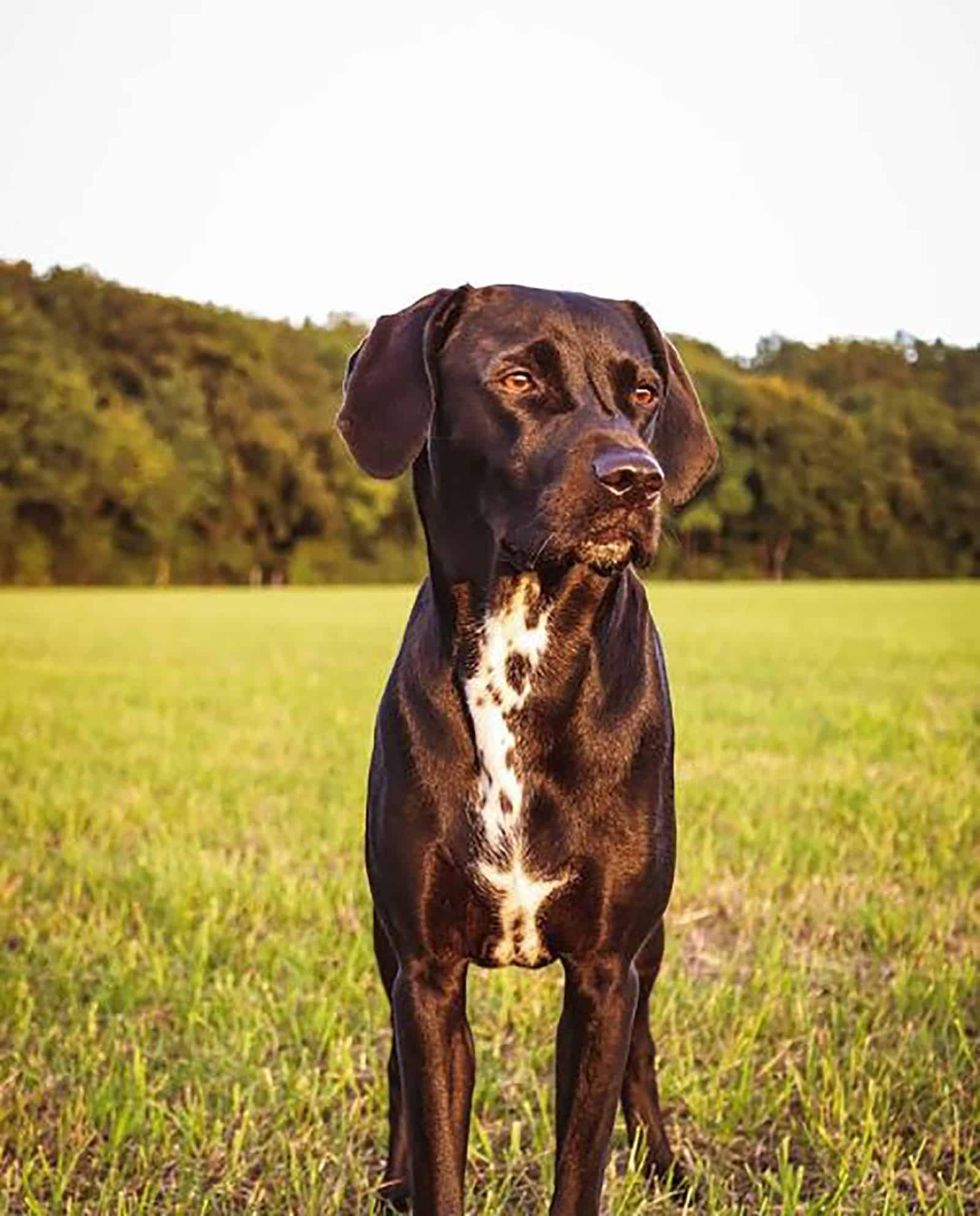
Photo from: @lotte_the_dalmador
Finding a puppy of a Dalmatian Lab mix might be challenging because of their relative rarity. We advise contacting specialized breeders who could be planning upcoming litters.
Regardless of where you obtain your puppy, we strongly advise enquiring about the parents’ health and any potential health issues. It is important to confirm that the pup’s Dalmatian parent does have a sense of hearing in both ears.
The Dalmatian Lab mix, as the name states, is created from two dog breeds. The purebred parent breeds of this designer dog are the Dalmatian and the Labrador Retriever.
Both dog breeds are known as great dogs, one being a famous family dog and other an outstanding working dog.
Designer dogs are becoming famous because the breeders concentrate on mixing two or more dog breeds to create the perfect combination.
What Is A Dalmatian Lab Mix Called?
You are probably familiar with the term Labradoodle. That is also the name of a designer dog, where one parent breed is a Labrador Retriever and the other is a Poodle.
The same thing is famous with this dog breed – the Dalmatian Labrador mix is often called a Dalmador. The Dalmador has parent breeds which are of a similar bodily characteristics and also personality ones.
Therefore, mixing these two dog breeds was actually a great idea!
Also, note that the Dalmador puppy is the cutest thing ever, and when you get the chance to see one, you probably won’t be able to resist having one.
Origin Of The Breed And The Parent Breeds
Dalmadors presumably date back to the 1990s, where creating hybrid breeds from purebreds initially gained popularity. Even though its ancestry is undoubtedly older than this, it is still considered to be a “young” dog breed in regards to heritage.
Around the 90s, many dog breeders were experimenting with mixing many dog breeds.
From those mixing German Shepherd and Chihuahua, all the way to the ones mixing the Labrador retriever with many other dog breeds.
The notion of mixing the Labrador retriever with many other dog breeds was an exceptionally popular one. The most famous dog breed that came out from mixing a Labrador retriever with any other dog breed is the Labradoodle.
However, our star of the show today is the Dalmador or the Dalmatian Labrador mix. It is a less popular mixed breed, however, it is popular enough for many people to have been asking about it.
Origin Of The Labrador Retriever
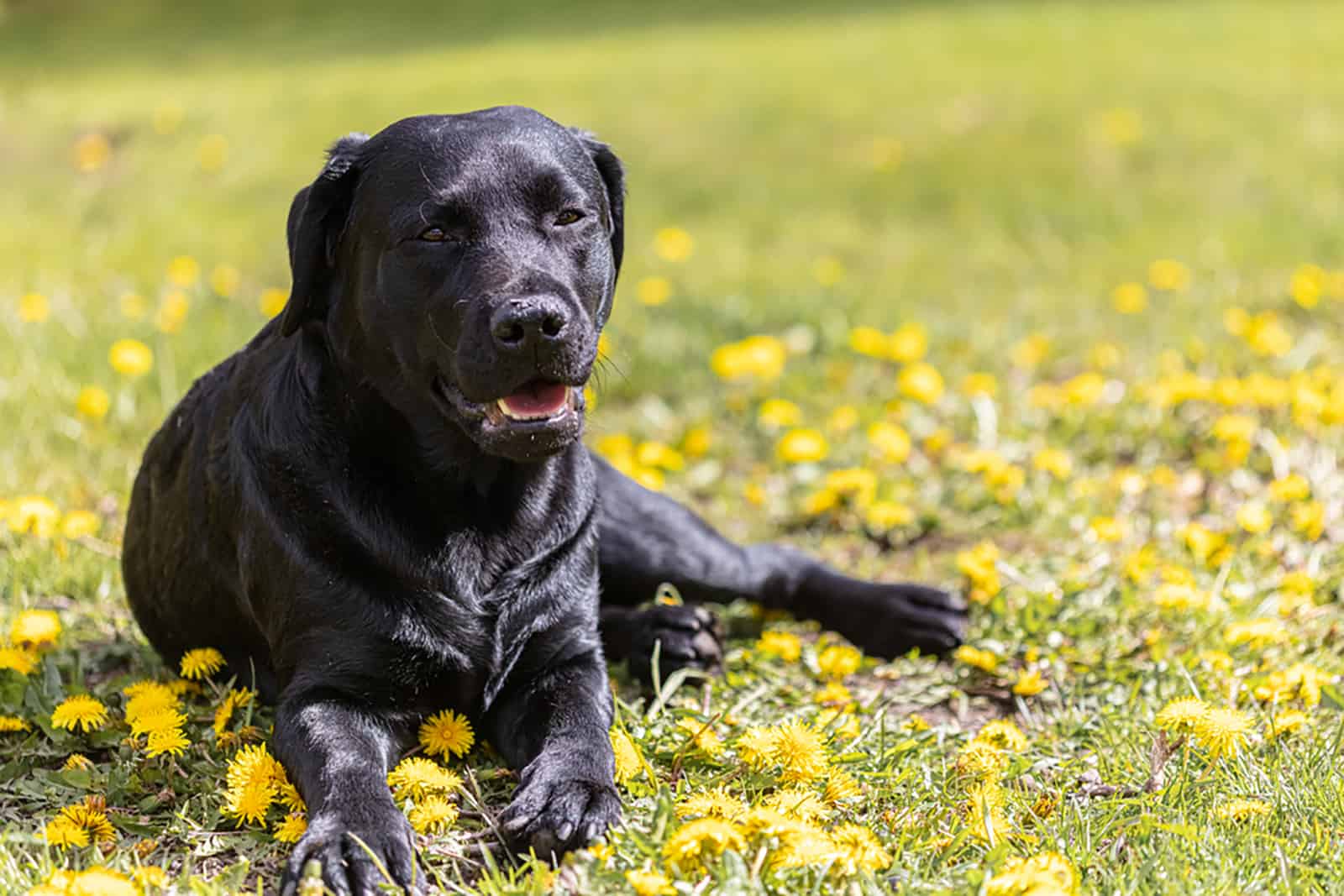
The Labrador dog was initially brought to Britain through boats traveling from Canada to Poole in Dorsetshire in the around the 1830s, after St. John’s water dogs produced by European settlers in Newfoundland were imported to the country.
The Labrador Retriever was eventually developed by crossing them with British hunting dogs. Early supporters featured Sir John Scott, the Earl of Malmesbury, the Duke of Buccleuch, and the Earl of Home.
The Lesser Newfoundland, as well as the much bigger Newfoundland, were both mistaken for the Labrador by earlier authors, including Charles St. John, who even called the Lesser Newfoundland the Newfoundland.
The earliest Labrador was not much bigger than an English Pointer, and frequently black more than other colors, wide in its face and snout with a broad chest, strong legs, and short and silky hair. It also did not hold its tail as straight as the Newfoundland.
In the 5th edition of his 1846 work ‘Introductions to Young Sportsman’, Hawker makes this distinction in which he separated Newfoundland between the “true Labrador” and the St. John’s breed among these dogs.
The Earl of Home’s dog “Nell“, which was both a Labrador as well as a St. John’s water dog, was the subject of the earliest known image of the breed, which was made in 1857. The term “Labrador Retriever” was widely used in England around 1870.
American Kennel Club And The Labrador Retriever
Ben of Hyde, a yellow Labrador, was reportedly born in 1899 in the kennel of Major C.J. Radclyffe. The Kennel Club recognized the breed in 1903. AKC registrations began in 1917 with the first ever submission.
A liver-colored litter of puppies was seen in the kennels in 1892, which is when the Liver (now commonly known as Chocolate) Labrador breed first appeared.
Origin Of The Dalmatian
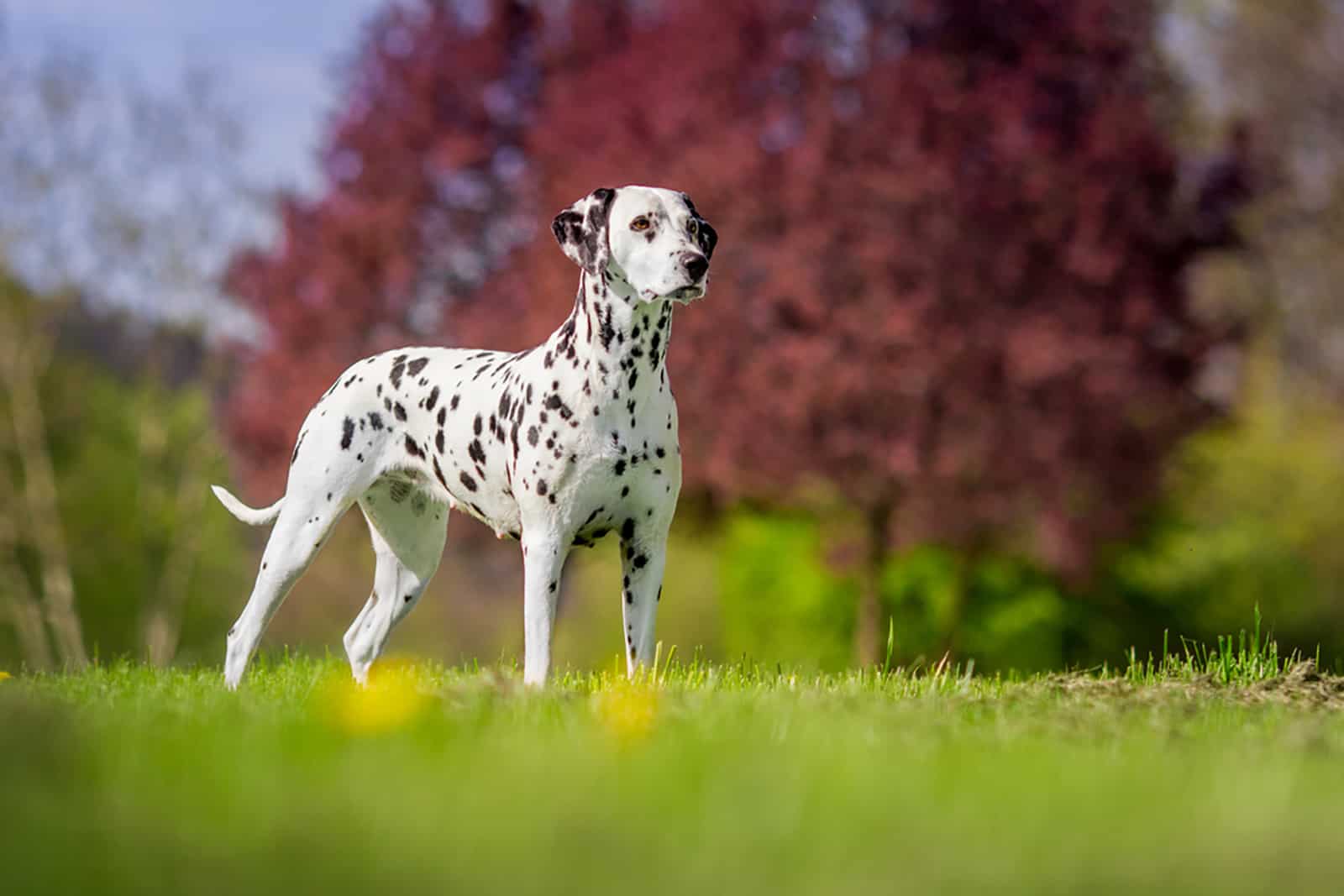
Citing a number of historical sources, Croatia is declared to be its nation of origin. Dalmatian dogs were first mentioned in writing in 1375 by Bishop of Akovo, Peter, who gave the name Canis Dalmaticus to a hunting dog of Croatia, primarily from
Dalmatia, having short white fur and black circular patches on numerous areas of skin.
Croatian frescos and an altar picture from the 1600s and 1630s at Veli Loinj and Zaostrog, respectively, include the first depictions of the Dalmatian.
The first known accounts of the Dalmatian may be found in the early 18th century in the records of the Archdiocese of Akovo, where the dog was referred to and characterized as Canis Dalmaticus in the church annals from 1719.
The Dalmatian evolved into a prestige symbol during the Regency era, trotting behind horse-drawn carriages, and those with ornamental spotting were greatly coveted.
This is how the breed came to be known as “the Spotted Coach Dog.” The dog was often employed at night watching over the barns.
The breed has mostly been raised in England. Vero Shaw, an Englishman, created the breed’s initial unapproved criteria in 1882. The standard was established in 1890, the year the first Dalmatian Club was founded in England.
The Dalmatian nomads were claimed to have employed the dog with the unusual markings as a companion and security dog when it was first displayed in England in 1862.
Beginning around 1920, the breed’s distinctive coat gained popularity and was rapidly dispersed throughout the European continent. Classic cynology writers frequently emphasized its spotted coat.
What Does The Dalmatian Lab Mix Look Like?
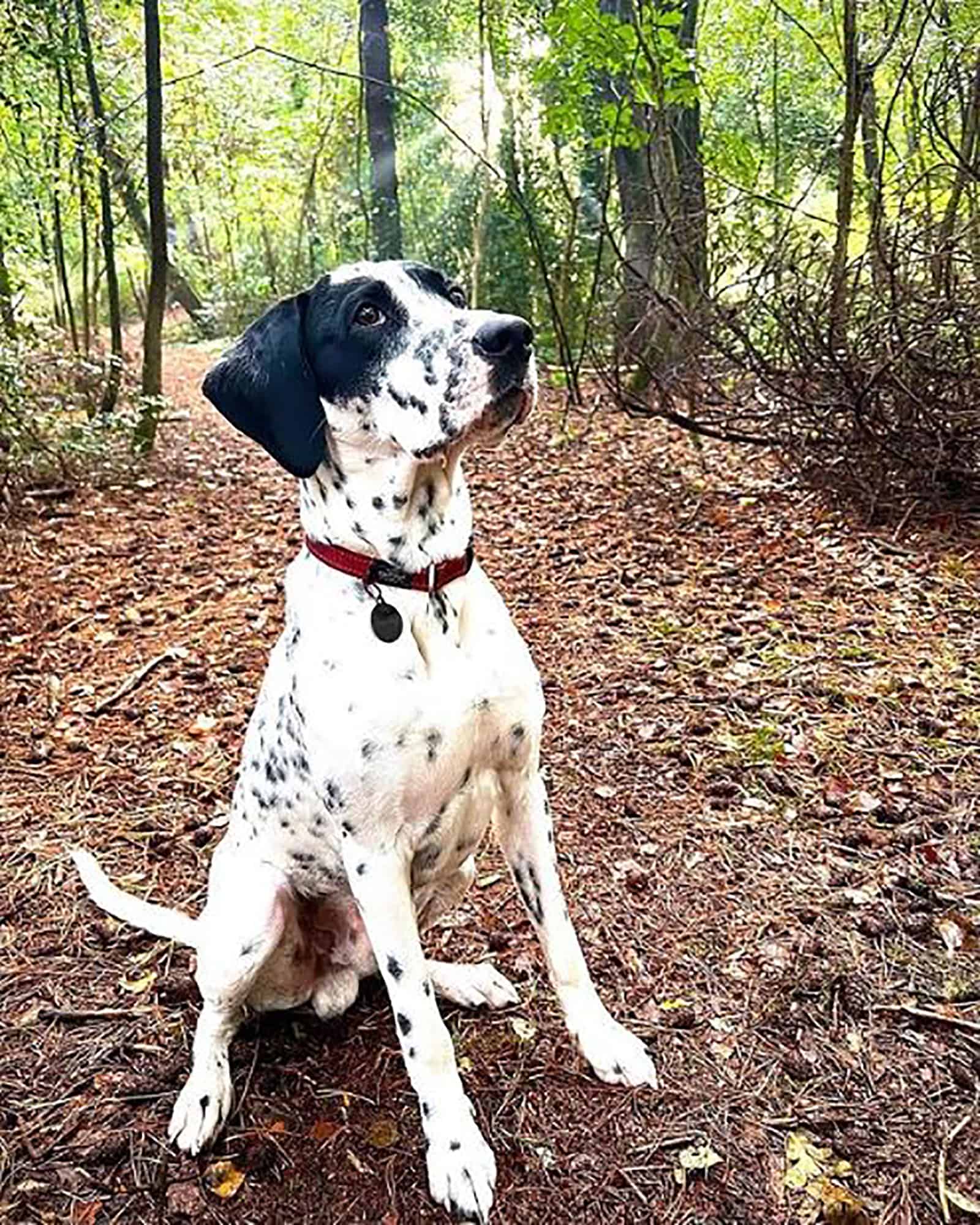
Photo from: @prince.the.dalmador
The purebred Labrador Retriever and Dalmatian were crossed to create the hybrid dog known as the Dalmador. Even within the same litter, there can be significant differences in terms of looks, color, and behavioral qualities.
Outcomes may be surprising since some dogs may receive fewer genes from one parent than another.
Several of the Dalmatians’ well-known dots and patches will be seen on the Dalmador. Spots frequently appear on a solid black coat and will be more noticeable in certain coats than others.
All coats won’t be the traditional Dalmatian white and black due to the Labrador ancestry.
The Dalmador has a powerful, muscular physique that is ideally proportioned. It also has a deep chest, robust, straight front legs, and compact, rounded paws. The tail has a long, pointed end.
Their ears are held from the sides of their head, and they have a somewhat rounded top to their skull.
Their scissors-shaped teeth meet on their long snout, which also features a black snout with broad nostrils. Their huge, dark-rimmed eyes with broad, dark-set pupils give the Dalmador an intelligent gaze.
How Big Will A Dalmatian Lab Mix Get?
The Dalmatian Lab mix is defined as a large sized dog, or a large medium sized dog, because of the parent dogs which are also on the bigger size.
Bear in mind that the Dalmatian Lab mix’s gender can also affect its height and weight, though. Typically, female dogs are smaller than male dogs.
Puppies of Dalmatian-Lab mixes mature into medium-sized to large canines. They can weigh between 35 and 80 pounds. Typically, they stand 20 to 24 inches tall around the shoulders.
What Are The Colors Of The Dalmatian Lab Mix?
The recognizable spotted coat that Dalmatians are known for will undoubtedly be inherited by the Dalmador in some form. It might be obvious and dramatic or hardly noticeable with only a few lighter specks on dark fur.
It is a somewhat heavy shedder and needs frequent brushing, especially during the spring and autumn shedding periods because of its short, thick, water-proof double-coat.
Their coats can be black, white, chocolate, or golden (tan). However, thanks to the two-colored gene inherited from the Dalmatian colors, the Dalmador puppies can be of many color combinations.
The Dalmatian Lab mix can turn out to be completely monochromatic, or it can be of two colors, having some spots and dots of any of the previously mentioned colors.
The outcomes can be quite outstanding, from a black colored Dalmador with golden spots, to a completely white one.
What Are The Dalmatian Lab Mix’s Personality Traits?
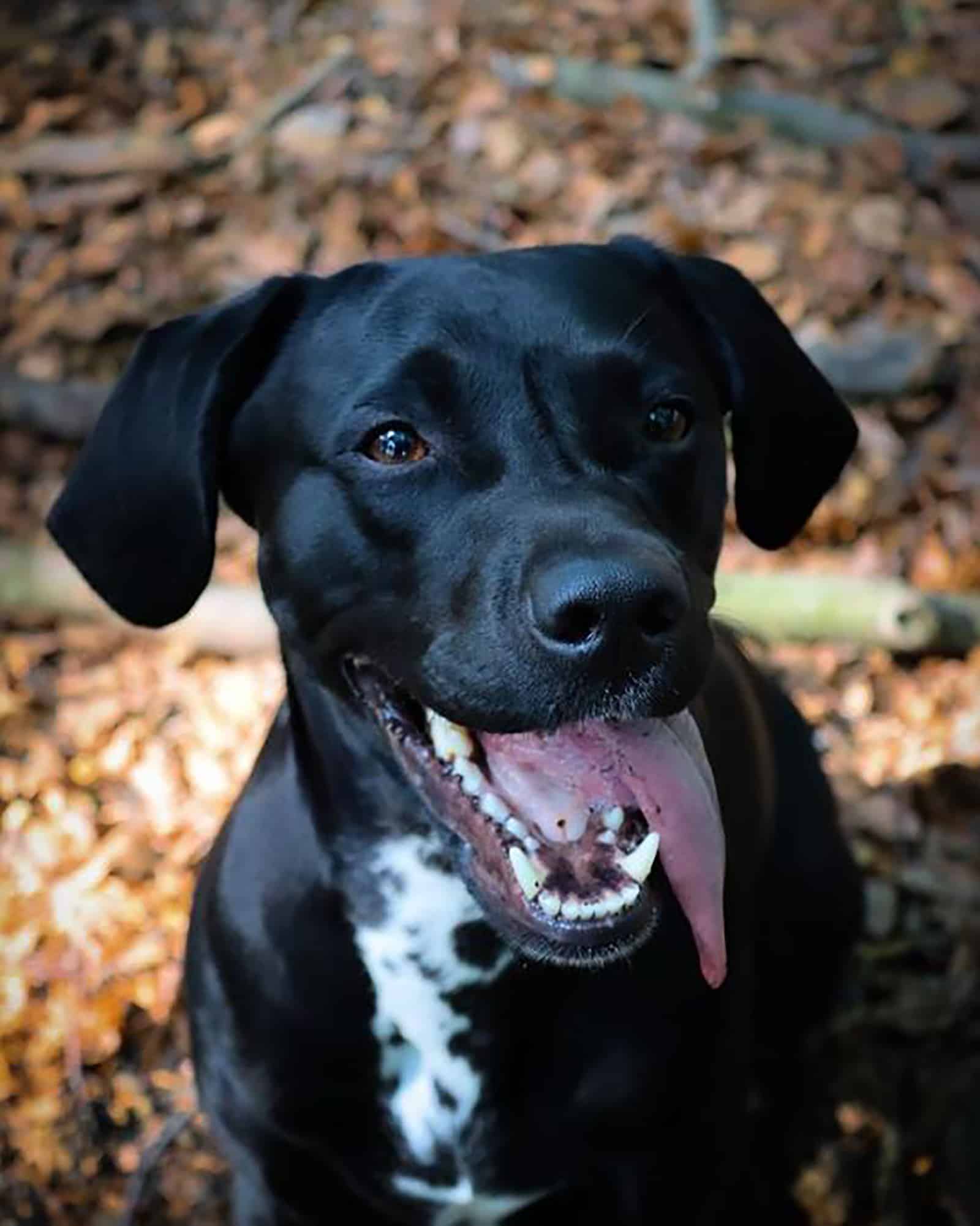
Photo from: @lotte_the_dalmador
The Labrador Retriever and Dalmatian can be crossed to generate a range of character characteristics, but the resulting Dalmador frequently combines the greatest qualities of the two of the Dalmador’s parents.
Although sensitive and with strong guarding instincts, Dalmadors have a laid-back and amiable demeanor that balances this out.
Being quite active, they love the chance to spend time with their family outside. These canines will be keen to participate in activities like swimming, jogging, bicycling, and hiking.
That’s not to say that these puppies don’t also like unwinding; long when they’re too large to fit, they’ll still be climbing up onto your lap to unwind with you.
They like playing with youngsters and may be a fantastic friend for older kids. Because of this dog’s size and enthusiasm, young children should be closely watched.
This crossbreed is a great mix of working dogs, guard dogs, and family companions that will definitely charm you with their many quality personality traits.
Dalmadors are intelligent creatures as well, therefore, if they are left alone or confined for an extended amount of time, they are likely to become bored.
It’s a good idea to give your dog several chances during the day to play and exercise outside.
Additionally, provide your dog with a lot of interactive dog toys to keep them and their teeth busy if you have to leave them alone.
Since many Dalmadors like chewing, supplying them with durable chew toys will save you from frequently replacing your furniture and footwear.
Are Dalmadors Good Family Dogs?
The Labrador Retriever is renowned for its sensitivity, and the Dalmatian breed is best suited for parents and young children because of their slightly protective temperament.
Dalmadors are renowned for their tenderness with kids of all ages and for having a laidback friendliness about them. Early dog and child socialization can help them develop into the best of friends.
These energetic and athletic canines will get along particularly well with active kids.
The youngster and dog will compete to determine who can exhaust the other more quickly if you allow them both to use their boundless energy for outside activities like jogging, swimming, and exploring.
They are great companions for any type of activity.
This large dog is a great family pet that will be your child’s best friend. They are known for their high energy levels that were inherited from both of the purebred dogs, especially the Dalmatian.
Combined with this dog being an intelligent dog, your child will make endless memories with this dog breed.
I would definitely recommend the Dalmatian Lab mix as a family pet because of their numerous quality personality traits.
Especially the ones regarding them being a great protector of your family, thanks to their natural guarding instincts.
There isn’t the slightest chance that anyone would even dare to look at your child in a bad way because they would surely get a not-so-friendly response.
Is The Dalmatian Lab Mix A Healthy Dog Breed?

Photo from: @lotte_the_dalmador
It is advisable to be aware of any potential health issues because Dalmatian labs might inherit health issues from one or both of their parents.
Generally, the Dalmatian Lab mix is considered to be a healthy dog breed, since it does not have as many health conditions as other breeds. For this dog breed, regular vet checks and plenty of exercise will keep the dog healthy and happy.
Possible Health Issues Of The Dalmatian Lab Mix
As with any other dog breed out there, the Dalmatian Lab mix has some potential health problems. However, fear not! Being a mix dog, it is usually a healthy dog breed without any major genetically inherited health problems.
However, some of those health problems may be:
1. Hip Dysplasia
Both Dalmatians and Labrador retrievers are large breeds that are susceptible to hip dysplasia. Hip dysplasia is the term for the improper development of the hip joint, that can often later cause severe arthritis and disability.
Before mating, adult Labs and Dalmatians ought to have their hips examined by a veterinarian; the results of the examination will be hip scores, which your breeder may share with you as a measure of the health of their joints.
In large breed dogs, hip dysplasia is a frequent developmental issue. It is brought on by a deformed hip, which causes joint slippage, or joint instability, which can result in discomfort, mobility problems, and osteoarthritis.
Even though the illness exists from an early age, many dogs don’t exhibit clinical symptoms until they are older.
However, early detection of hip dysplasia in your pet might offer you the chance to correct the malformed joint before it becomes problematic.
2. Deafness
Although Dalmatians typically have adequate hearing from birth, some develop deafness within a few weeks. One or even both ears could be impacted by the condition. Dogs who have excellent hearing in one ear should be able to lead typical lives.
Those who lack hearing in both ears have severe limitations.
The illness process that causes hearing loss is linked to melanocytes, cells that create and store pigment and may transfer color to other tissues including the fur and the iris of the eye.
It appears that melanocytes are necessary for the healthy operation of the inner ear.
The severe piebald gene, which makes Dalmatians’ coats mostly white and their eyes blue, is also linked to deafness in this breed (but just the ones with blue eyes).
The severe piebald gene is homozygous recessive in Dalmatians, and deafness appears to be a connected polygenic condition.
Because the gene is inherited, it is quite possible that genes that trigger deafness are indeed inherited.
The severe piebald gene has not fully developed in certain Dalmatians. Such dogs are much less likely to be deaf or display a patch, a wider area of black fur than the typical spots.
Unfortunately, the breed standard views possessing such a patch as a flaw. Animals with blue eyes are more likely to be deaf.
Unsurprisingly, the breed standard views possessing such a patch as a flaw. Finding the processes in which the piebald gene causes deafness has been attempted, but these attempts have not yet proven fruitful.
3. Obesity
In Labradors as well as flat coat retrievers, the researchers discovered that a mutation of one specific gene, called POMC, was closely linked to bigger appetite, body weight, and obesity.
It is estimated that one copy of a variation is carried by about one in four Labradors. For each version of the gene inherited, dogs in both breeds were typically 4 pounds heavier.
Given the degree upon which owners, instead of the dogs themselves, determine the quantity of food and activity their dogs receive, that impact size is particularly noteworthy.
The following body condition measures will help you determine whether your pet is overweight or obese and, if so, you should take them to the vet to check for any underlying conditions and start a weight-management strategy.
Your pet will be weighed by your veterinarian, who will also get a bodily condition rating.
Then, the outcomes are evaluated against breed standards. Obesity is defined as an increase in body weight of 10% to 15%.
4. Urinary Stones
Uroliths, as they are known to veterinarians, are mineralized masses that develop as minerals in urine clusters with one another to create bladder stones. Strivite with calcium oxalate particles are the two forms of bladder stones that affect canines most.
When a dog has bladder stones, they may or may not show symptoms of a lower urinary condition.
Your veterinarian would likely advise providing a meal that is specifically designed to aid in the dissolving of struvite stones.
Always check with your vet to see whether your dog will benefit from a therapeutic diet like Hill’s Prescription Diet. Your veterinarian could also recommend medications if such stone is connected to an infection of the bladder.
Lifespan Of The Dalmatian Lab mix
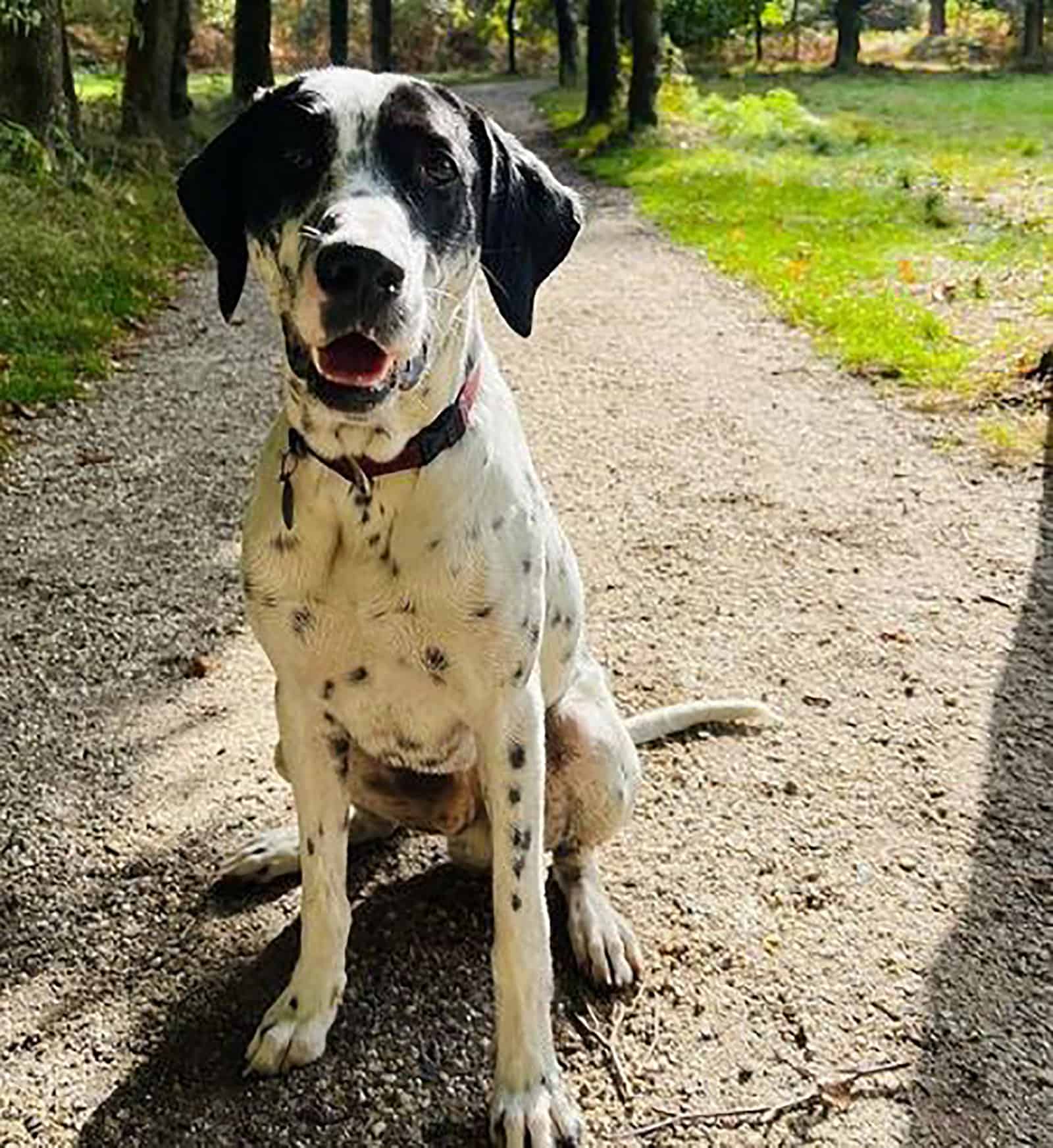
Photo from: @prince.the.dalmador
The average lifespan of a Labrador is 10 to 12 years. The purebred Labrador Retriever might be vulnerable to conditions including weak knees and hips, elbow as well as hip dysplasia, torn ligaments in the rear legs, and persistent allergies.
Additionally, Labs are more likely than the general population to get bloat, a digestive disorder. A purebred Dalmatian can live for 11 to 13 years and is susceptible to hip dysplasia, hyperactivity, blindness, obesity, urinary stones, and epilepsy.
Considering the aforementioned, the lifespan of your Dalmador might range from 10 to 13 years, and the health problems it experiences could change according to the problems its purebred parents passed along.
A Dalmador’s early health exam can assist in preventing or preparing for future health difficulties.
Reputable breeders will indeed be able to produce documents indicating the parent breeds have undergone screening and have been found to be free of specific health problems affecting the parent breeds’ wellbeing.
Exercise Needs Of A Dalmatian Lab Mix
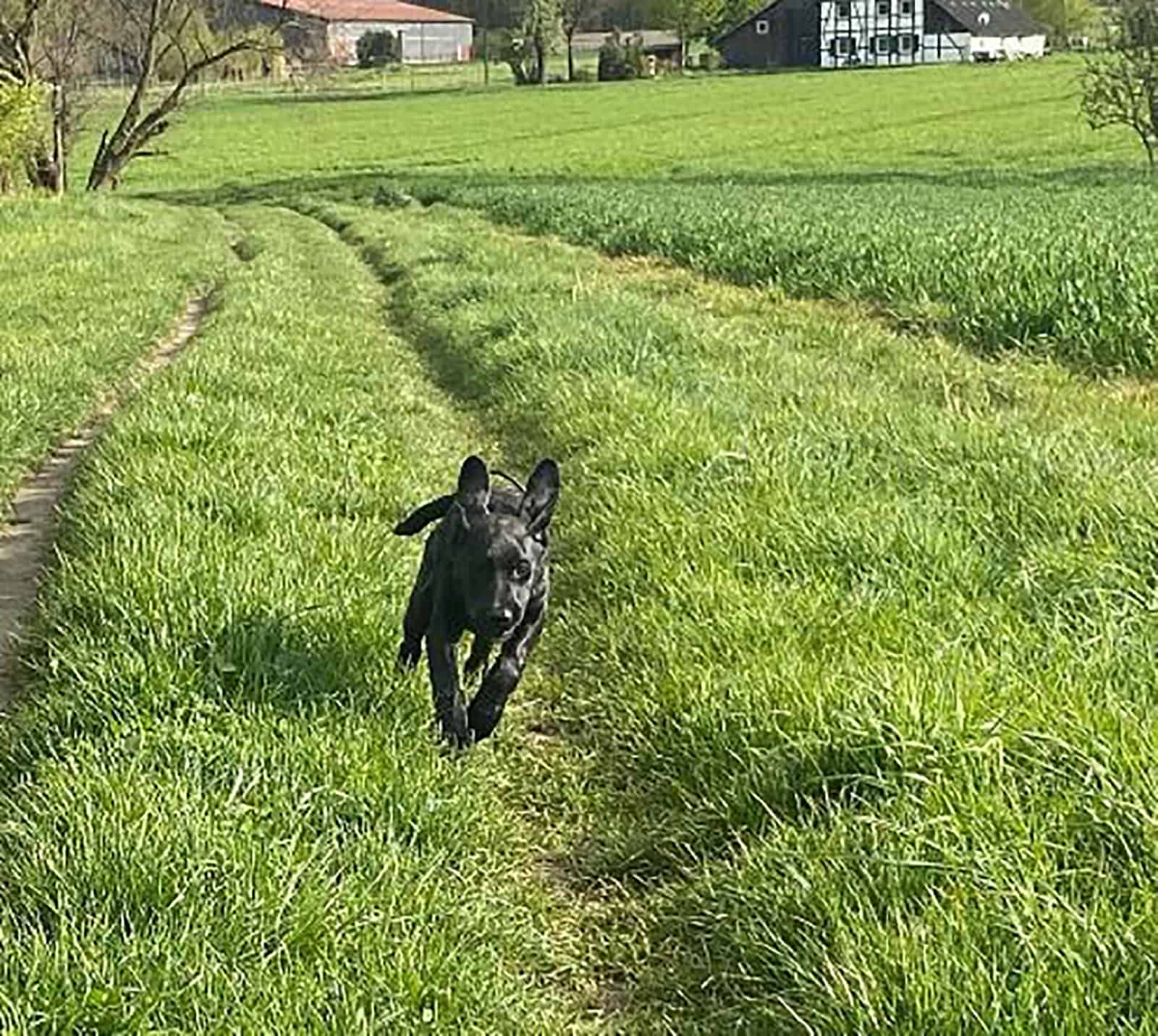
Photo from: @theo_der_ruhrpottlabbi
The Dalmador is bright and willing to please, and it reacts well to instruction. They have a lot of energy and can occasionally be easily distracted, especially when they’re young.
Although they pick things up quite quickly, they require strong, encouraging teaching as well as a lot of patience.
Similar to any dog, it is strongly advised to teach your pet a few simple obedience instructions and a powerful, dependable recall.
Dalmador pups must undergo obedience training since their too friendly nature might not always be welcomed, especially as they get older.
The Dalmador is a cross of two intelligent breeds that are frequently employed as service dogs.
Despite its intelligence, it may be a bit of a challenge to train, and like most dogs, it will require a systematic and disciplined approach throughout its formative years, especially when it comes to controlling its propensity to bark or howl.
This dog requires good dog training, however, thanks to its high trainability levels, you won’t be bothering for a long time –- these dogs will learn everything quickly.
The greatest way to teach obedience and socializing skills to dogs of all breeds is through a positive, rewards-based method.
A speedy and effective training procedure will be the consequence of clear, constant instructions, lots of praise, and your preferred incentive.
This mixed breed will need around 40 to 60 minutes of tiring daily activity. Being a high energy dog breed, they would happily accompany you for a swim, run, jog or actually, any kind of exercise.
Grooming A Dalmatian Lab Mix

Photo from: @lotte_the_dalmador
The Dalmador may shed a whole lot, so grooming them and removing the fur before it covers the house requires a little extra work. With the arrival of spring, the coat frequently falls out, and chunks of hair might be plucked out.
Three times a week, usage of a hard bristle brush can assist keep its coat healthy.
By bathing the Dalmador, you may reduce hair loss and avoid dog smell. Just make sure to use a dog-specific shampoo to avoid any adverse reactions.
If you begin when your Dalmador is still a young pup, it will serve as a meaningful time for bonding and they will appreciate all the attention.
You should routinely inspect your Dalmador’s teeth, nails, and ears, just like you would any other puppy. To prevent infections, ear wax buildup and debris must be removed.
Even while some nails may be naturally worn down, some nevertheless require the occasional cut to avoid splitting. Additionally, regular dental care will give your dog cleaner breath, teeth, and lessen the risk of gum disease.
As infections might develop into a problem, keep an eye on inside their ears. Wiping the ear can assist eliminate any debris.
Unless they are sufficiently active to wear them down spontaneously, their toenails may need to be clipped.
If you’ve never handled it before, ask a dog groomer to explain to you how to perform it in order to avoid cutting overly low and injuring your dog.
Feeding A Dalmador
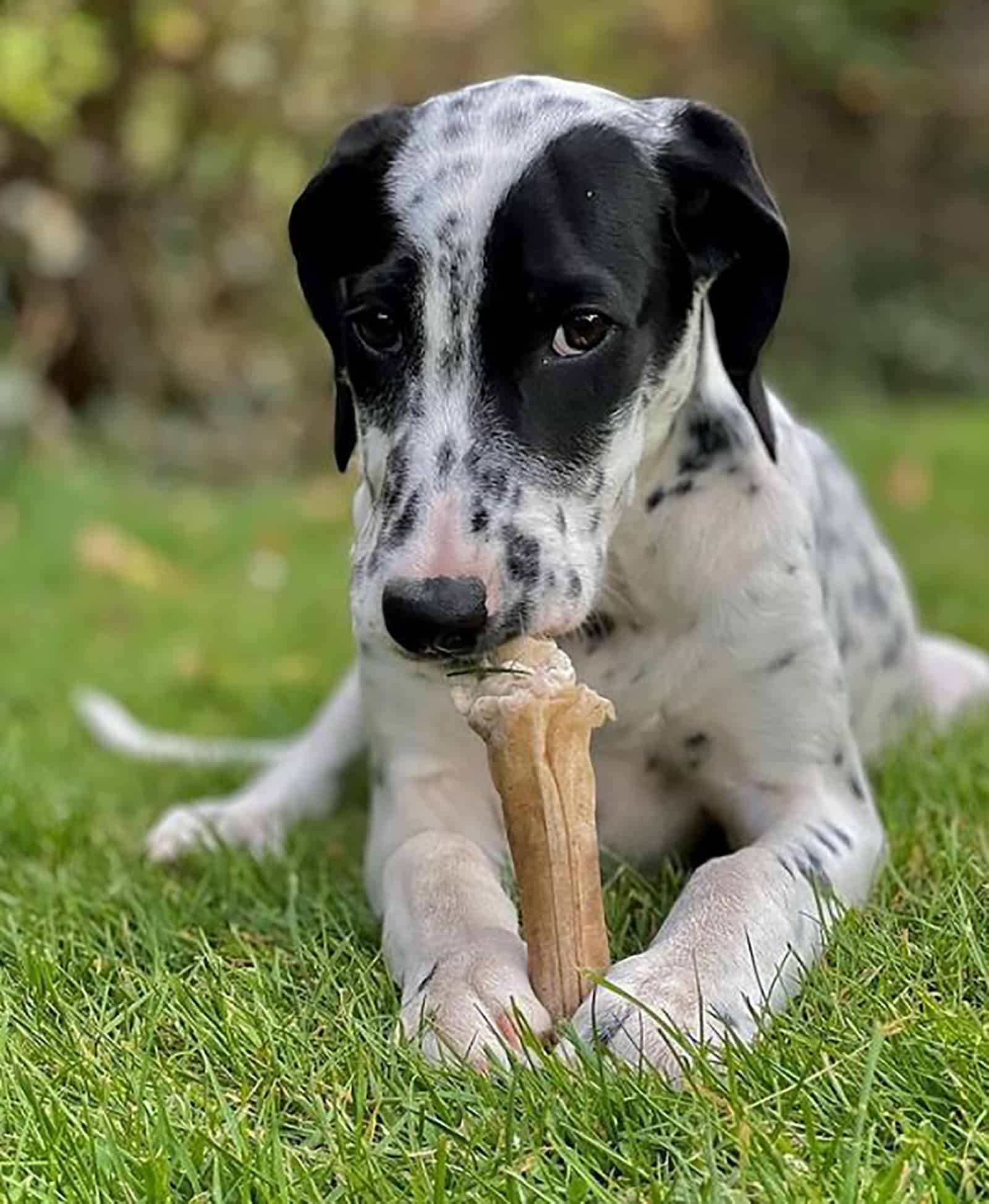
Photo from: @prince.the.dalmador
The Dalmador needs a meal that is particularly formulated for its age and exercise level since it’s a medium to large dog.
You should anticipate them eating between 2.5 to 3.5 cups of food each day, and the grain size should really be big (to assist minimize chomping).
They must always have access to fresh water since Dalmatians can get urinary stones.
Foods containing glucosamine are a smart choice as hip dysplasia is a worry for Labradors, and food ought to always be of the highest quality and list “meat” as the first ingredient.
Given that Labradors have a tendency to overeat, spread out meals across two or even more feeding times and make careful to steer clear of fillers like grains and carbohydrates that can encourage it to eat more than it needs to be satisfied.
If your veterinarian gives the go-ahead, you can occasionally spice up meals by giving them some vegetables, fruits, and lean meats.
Due to their genetic propensity for obesity, both of the parent breeds of the Dalmador develop joint issues quite fast.
In order to prevent your Dalmador from carrying around extra weight, be sure to consult your veterinarian regarding acceptable meal amounts and weight increase.
Is The Dalmatian Lab Mix An AKC Approved Dog Breed?

Photo from: @prince.the.dalmador
The Dalmador has, obviously, purebred parent breeds, which are American Kennel Club approved for a long time. They are both great show dogs, great working dogs, and even better family pets.
However, being a designer dog breed, the Dalmador cannot be a part of the AKC for various reasons.
Therefore, the Dalmador, also known as the Dalmatian Lab mix, is not a member of the American Kennel Club (AKC).
However, the dog breed is a member of the American Canine Hybrids Club (ACHC), the Designers Breed Registry (DBR), the Designer Dog Kennel Club (DDKC), and the Dog Registry of America, Inc. (DRA).
Final Word
A Dalmador puppy may naturally be more reticent like a Dalmatian or extroverted like a Lab. In the long run, it’s not particularly accurate to predict this from their puppy nature.
Introvert or extrovert, your Dalmatian Lab mix puppy will definitely become your best friend.
Fortunately, Dalmatians and Labs each make wonderful family pets, which increases the probability that their progeny will be, as well.
A Dalmador needs a lot of space to move around and play, as well as several possibilities for cognitive engagement.
If you choose to own a Dalmador, we advise maintaining a positive mindset and not having preconceived notions about how your dog will seem or behave.
These dogs have high levels of trainability, which means that you will easily train your best friend. Trainability combined with this being an intelligent dog, makes a great match for almost any dog owner.
They make great guard dogs like a Rottweiler, and great easy-going dogs like a Beagle is. For you, that means that this dog breed has a well-rounded personality, which can easily fit in with any kind of family (only if it is an active one!).
I would recommend reading the Pippa Mattinson’s book ‘The Happy Puppy Handbook’, if you are a first time owner. The book will help you with some training strategies that should be implemented in the pup’s early life.
The book will help you understand your dog’s needs better, and also the ways to fulfill them.
The Dalmatian Labrador mix will steal your heart without a doubt. If you have the chance to be an owner of this dog breed – just go for it.
We have given you the most important information about the Dalmatian Lab Mix, and now – it is your time to shine.
